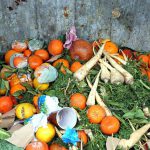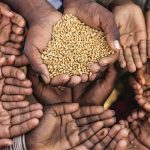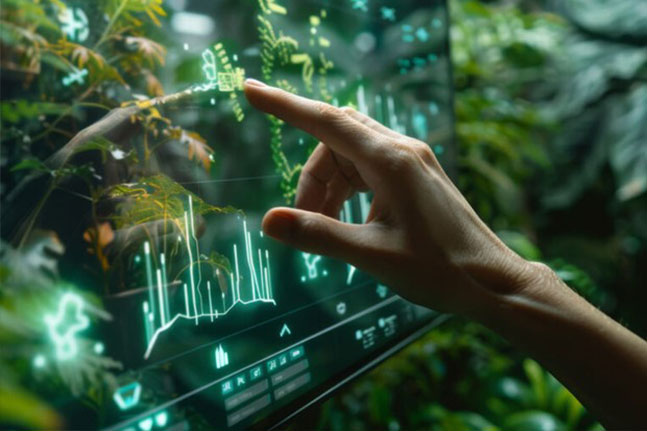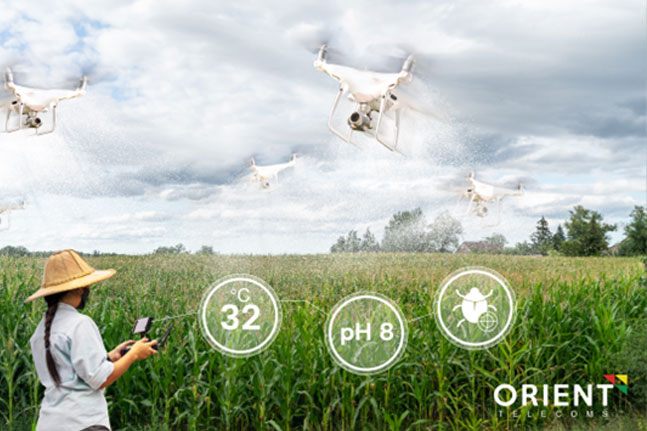
HOW WE CAN COUNTER CLIMATE CHANGE BY REDUCING FOOD LOSS AND WASTE
February 29, 2024
PUTTING A NUMBER ON HUNGER: DIFFERENT MEASURES FOR DIFFERENT PURPOSES
April 18, 2024We are not on track to achieve zero hunger – the focus of SDG 2 – by 2030. But agricultural technologies, if applied right, can help fulfil the aspiration of sustainable, inclusive, and resilient agri-food systems and leveraging emerging opportunities for achieving the SDGs. A new report from the UN Secretary-General provides examples of ways to use technology to move agri-food systems beyond business-as-usual options.
OFF TRACK IN 2021
A healthy diet costs far more than the international poverty threshold of USD 1.90/day, and a staggering 3 billion people cannot afford one. In 2020, between 720 and 811 million people were undernourished globally, around 161 million more people than in 2019. Conflict in protracted situations, the impacts of COVID-19, and weather extremes are worsening pre-existing drivers of hunger.
Simultaneously, the global obesity rate continues to grow, and undernutrition coexists with overweight, obesity, and other diet-related non-communicable diseases (NCDs). Approximately 14%of the world’s food is lost post-harvest, and 17% is wasted at the consumer and retail level.
HARNESSING TECHNOLOGY TO OFFER HOPE
Agricultural technologies (including biotechnologies, digital technologies, renewable energy technologies and mechanization) can be harnessed for addressing these challenges and leveraging emerging opportunities for achieving the SDGs. The 2021 edition of the UN Secretary General’s Report on Agricultural Technologies for Sustainable Development, which draws on contributions from across the United Nations system, analyzes technological trends, the potential benefits, risks and uncertainties surrounding emerging technologies, and provides examples of promising technologies for enabling transformation in agri-food systems.
Biotechnologies have reduced time in breeding cycles to develop improved varieties and breeds and enabled targeted improvements. Developments in genetics, molecular and phenotypic characterization, reproductive biotechnologies, and conservation techniques help to keep a range of domesticated genetic resources available, accessible, and adapted to meeting the changing needs of producers. The sterile insect technique has been widely used as an important component of integrated pest management to suppress target insect pests in many countries. Whole genome sequencing can provide a strategic option for identifying and tracing foodborne pathogens around the globe.
Precision agriculture in crop, livestock, and fisheries can increase efficiency and allow optimization of conventional production systems. Remote sensing technology can be utilized to detect water stress in advance and monitor agricultural water productivity. Blockchain can lay the foundation for a worldwide network with reliable carbon data and act as a tool to accelerate global actions towards the achievement of the Paris Agreement and Agenda 2030.
Technology is being used increasingly map and monitor the spread of infectious diseases and facilitate coordination across sectors. Digital innovation can be an enabler of financial inclusion by tackling bottlenecks faced by small-scale producers seeking access to financial systems. E-commerce platforms can leverage market linkages, shorten the food value chain, strengthen business engagements, support market intelligence systems, and promote market access.
LEVERS OF CHANGE MUST WORK TOGETHER
The report notes that no technology or innovation works in isolation or is a silver bullet. Technologies need to be developed and applied in a coordinated and coherent way with other levers of change, including governance, human capital, business and finance, and individual and collective action to make agri-food systems more sustainable, equitable, and resilient.
Innovative technologies must be embedded within agroecological and other sustainable agricultural approaches – including conservation agriculture, climate smart agriculture, agroforestry, and organic agriculture – building on and benefitting from local and traditional knowledge. Ongoing monitoring and evaluation activities as well as scenario-building exercises must evaluate and anticipate the context-specific needs of small-scale producers and assess the differential impacts of agricultural technologies at temporal and spatial scales. This assessment should cover the potential benefits, risks, and unintended consequences as well as any barriers for adoption and diffusion.
The report also emphasizes that digital inclusion of the most marginalized groups requires a targeted and comprehensive approach. This means providing more equitable access to agricultural technologies, identifying and changing exclusionary policies, establishing gender-responsive extension and advisory services, optimizing farmer services and labor-saving technologies, and improving overall digital literacy and skills. Adequate and effective policy frameworks and incentives, regulatory measures, and economic and legal instruments to create an enabling environment for agricultural technologies are fundamental to advance the goals of the 2030 Agenda.
The UN should continue to leverage its convening power for multi-stakeholder dialogue and consensus-building. FAO has reinforced its role as a neutral forum for open and constructive dialogue and exchange of knowledge. Upcoming events such as the UN Food Systems Summit on 23 September 2021, COP 15 of the Convention on Biological Diversity (CBD) and the Glasgow Climate Change Conference (UNFCCC COP26) offer important opportunities to connect the food system agenda with the biodiversity and climate agendas, and bring together science communities with policymakers and other stakeholders for engaged knowledge production and identification of innovative evidence-based solutions.
Agricultural Technologies are Key to Agri-Food Systems Transformation





